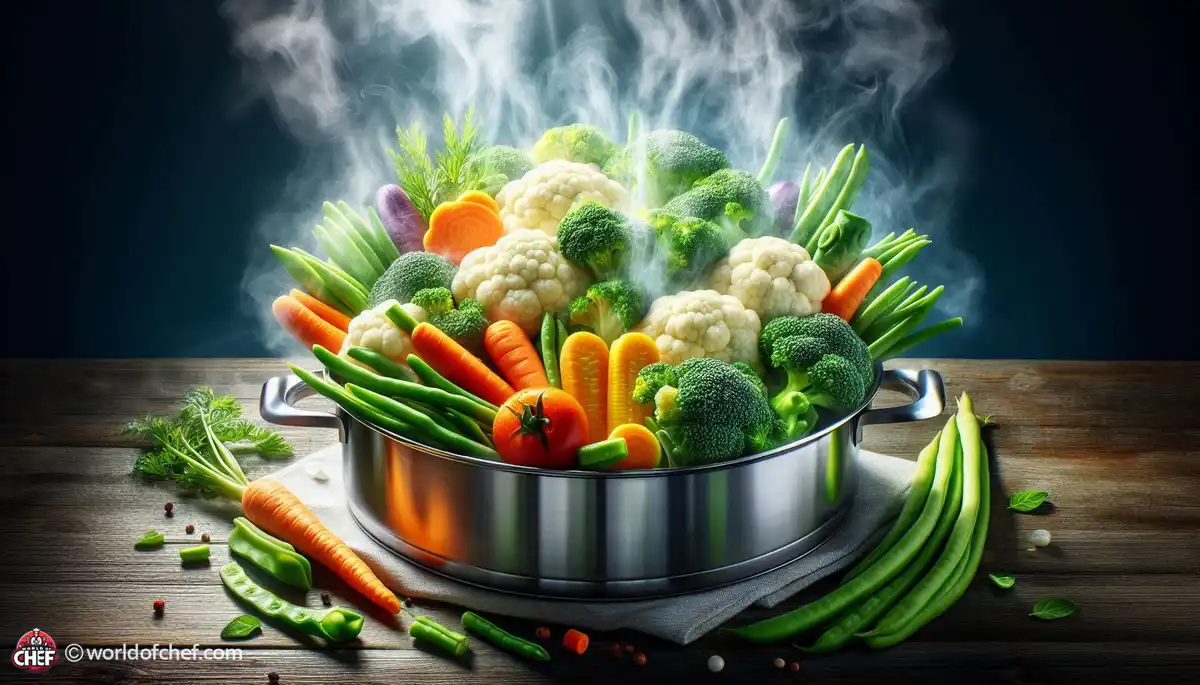
Simmering with Spices: Infusing Flavor into Your Dishes
Emery Donley - Oct 8, 2024 - 8 min read


The best way to save all the nutrients in them is through steaming. It will make all the important vitamins and minerals drip to the water if it gets boiled. Steaming allows keeping them in the veggies. You will avoid loss of essential heat that one gets if too much water is poured on his vegetables for a long period through steaming your vegetables. Vibrant colors and flavors that your veggies are expected to have in them is retained successfully, as they are nutritionally kept. The benefit gained from the vegetables to human health does not lose its maximum.
The other most important advantage of steaming vegetables is that it allows retaining the texture of vegetables. Steaming the vegetables, most of the cooking that involves boiling the vegetables results in them becoming soft and mushy, and lose the crunch that the vegetable is supposed to possess. Steaming cooks the vegetables tender but still crispy. Whatever be the type of vegetables you are steaming: broccoli, carrots, or Brussels sprouts, they do not lose the crunch, and firmness; this makes steamed vegetables healthy and delicious too.
It is a very versatile tool for steaming vegetables. Pretty much any type of vegetable can be steamed, from Leafy Greens such as spinach and kale to root vegetables like potatoes and beets. But you can also steam the vegetables separately or in multiples, giving a lot of flexibility. In addition to being used in simple preparations like steamed vegetables and rice, the steamer can also perform a much more complex role, preparing dishes such as stir-fries. You can use herbs, spices, or sauces while adding water for the preparation of the steamed vegetables, giving unlimited ways for flavoring the dish.
Steaming vegetables needs the right equipment. One tool that you should not do without when steaming your vegetables is a steamer basket. This simple utensil sits inside a large pot with water at its bottom, and the produced steam cooks the vegetables with ease. Alternatively, large quantities of vegetables can use a steaming rack or a bamboo steamer; ensure that the steamer basket or rack fits securely inside the pot to block the escape of steam from the pot.
Start by cleaning the vegetables you're preparing to get rid of any grime or dirt on them. Remove those parts you do not intend to use, such as roots or leaves, but be sure to chop your vegetables uniformly since different pieces might take other steaming time. Even potatoes or squashes have to be sliced or chopped even if prepared cut in slices when preparing their main part.
Steaming vegetables is a very simple process. All you need to do is fill a pot with water, about an inch in depth, and boil the water on medium-high heat. Once the water has come to a boil, add your steamer basket or rack to the pot. Add the vegetables to the pot in a single layer and cover the pot. Then, let the vegetables steam until they are tender yet crisp. Cooking time will depend on the type and size of the vegetables, so watch them to prevent overcooking.
Overcrowding the steamer basket or rack is one of the most common mistakes when steaming vegetables. If you pile too many vegetables on top of each other, they won't cook evenly. Ensure that all the vegetables are placed in one layer, leaving some open space between each piece in order to allow the circulation of steam. If one has a large batch to steam, it is usually better to do it in batches rather than trying to steam them all at one time.
While steamed vegetables have their own taste, they can be taken to an entirely different level with seasoning. You can pre-season the vegetables by placing herbs, spices, or a splash of soy sauce into the water before you steam them. You could do it after they've been steamed, drizzling with a little olive oil and seasoning with salt and pepper to taste, or squeezing the juice of a slice of lemon. Try to find something that works for you.
Leftover steamed vegetables should not be wasted. They can easily be salvaged by steaming them for a few minutes. That makes them nearly as fresh from the steamer as fresh. Otherwise, you may combine leftover steamed vegetables with soups, salads, or stir-fries. They are nutritious enough to contribute a nutritious input to any meal and do not contribute to food wastage.
One of the best, healthiest cooking methods ever, it just keeps on allowing the flavors, textures, and even nutritional content of your favorite vegetables to come alive by allowing you endless creativity with countless variations and dishes from steaming the humble veggie. By providing yourself with the proper tools of the trade, not forgetting to remember these quick hacks, you're set with nothing but pure enjoyment each time you go ahead with your perfectly steamed delights. So, when searching for that convenient healthy dish for the family or self, give steaming a whirl, and I can bet on satisfaction!

Emery Donley - Oct 8, 2024 - 8 min read

Russell Comeaux - Oct 8, 2024 - 8 min read

Walter Backus - Oct 7, 2024 - 8 min read

Samantha Thames - Oct 7, 2024 - 6 min read